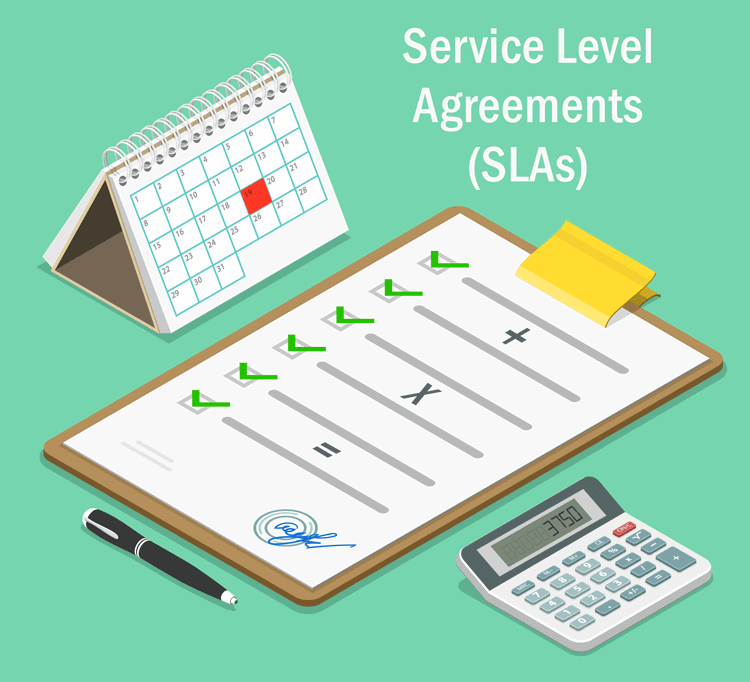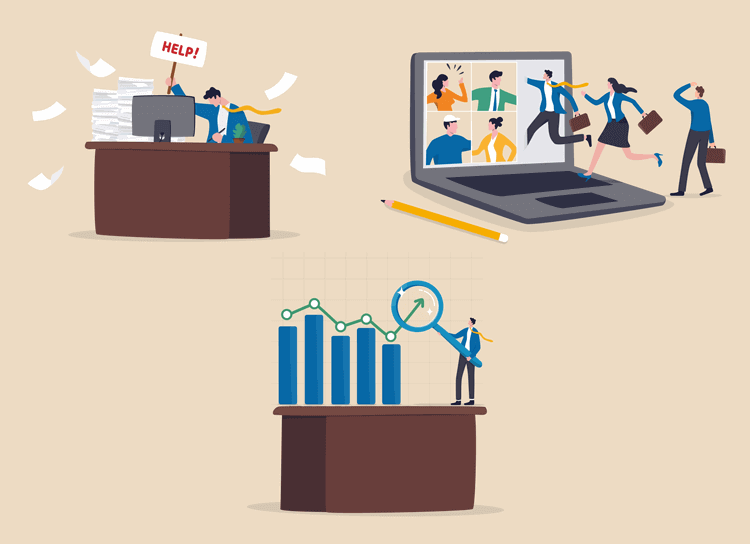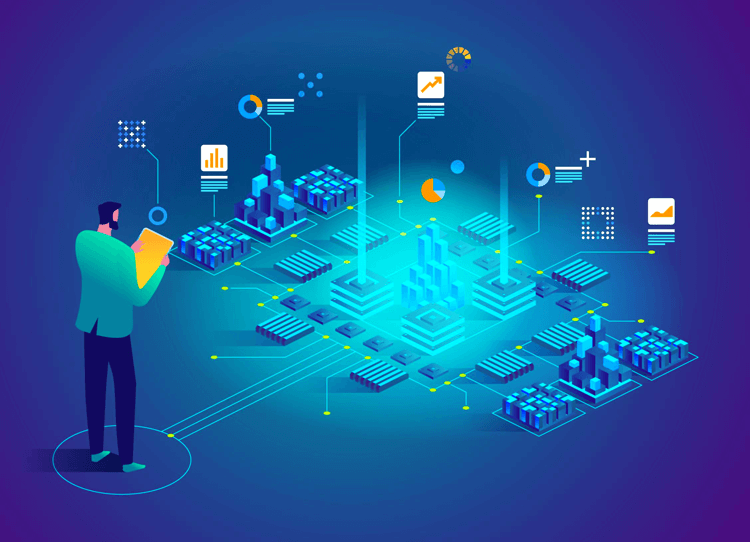SLA Formula: How to Calculate and Improve Service Level Agreement Scores
When it comes to customer service and IT support, Service Level Agreements (SLAs) are essential for ensuring high-quality customer service and maintaining contracts between in-house teams, customers, and service providers.
As call center and IT help desk managers, your ability to maintain high SLA scores can significantly impact both customer satisfaction and the efficient running of contact center or IT operations.
SLA scores are a metric-driven way of measuring team performance and whether contractually-agreed or expected service standards are being maintained. For example, if an IT team and software vendor are contractually obliged to ensure 99.99% uptime, and this drops to 70%, causing serious unexpected outages, then they'd be failing the SLA.
In this article, we go into detail about how to calculate and improve SLA scores, exploring real-world examples, and discovering effective strategies to enhance those scores.

What is an SLA, and What are They Used For?
Service Level Agreements (SLAs) are formal commitments outlining the service quality your customers can expect.
In a B2B scenario, such as an IT help desk or service desk, whether in-house or through an external vendor, an SLA forms an essential component of the business contract between both parties. If an IT help desk or software vendor consistently falls below SLA standards, then that can be grounds for contractual termination.
In a B2C environment, customers who call or live chat agents at a contact center haven't entered into an SLA agreement. Most wouldn't know or care about SLA scores. However, they care that their calls are answered quickly, and that they receive a resolution to their problem. Therefore, SLAs and customer service/CX managers monitoring SLA scores and identifying how to optimize them are mission-critical for the organization.
SLAs encompass numerous service elements, from response times to resolution strategies, tailored to meet the unique needs of call centers and IT help desks. In essence, SLAs form the backbone of customer-centric operations, ensuring that expectations are clearly laid out and achieved.
How to Perform an SLA Calculation
Behind every successful service delivery, whether in contact centers or help desks, lies a clear understanding of how to calculate SLA scores. Managers and senior leaders need to be clear on this so that expectations are set and met accordingly.
Before we dive into the SLA calculation, let's stress the importance of having clear targets and Key Performance Indicators (KPIs), and other metrics of success, such as Customer Satisfaction (CSAT) or Net Promoter Scores (NPS).
Service Level Formula
On a basic level, SLA scores are calculated the following way (using telephony, Live Chat, or IT support ticket response times as an example):
Service Level Agreement (SLA) % achieved = ________%
Calculate as follows:
(No. Of calls/tickets answered within XX seconds or handled under FCR / Total number of calls/tickets inbound) x 100
Example:
(# of calls/tickets answered within XX seconds or handled under FCR
80
/
Total number of calls/tickets inbound)
120
=
.66
X 100
= 66.6% achieved
This SLA percentage score serves as an indicator of your team's performance, ensuring SLA standards and KPIs have been met and are guiding continuous service improvement actions.
Now, let's look at SLA scores in action, how to deal with considerations such as abandoned calls, and ways to improve an SLA score.
An Example of an SLA Score in Action
Imagine a bustling call center striving to resolve customer issues promptly. SLA scores are a high-level overview of other KPIs and metrics that impact the customer experience and operational practices.
Let's consider an IT help desk Tier 2 scenario where an SLA dictates a response time of 20 seconds and a resolution time of 4 hours. A customer sends in a mid-level complex support ticket with a high level of urgency, so it's automatically filtered to a Tier 2 agent. The IT support agent promptly responds within 20 seconds – hitting the response SLA. Subsequently, the agent diligently resolves the issue in just 2 hours instead of the allocated 4 hours. This successful interaction contributes positively to the SLA score, and this would count as being within SLA standards.
Now, if the agent had responded in 40 seconds and only managed to resolve it in 10 working hours, then it would fall outside of SLA standards and count as an SLA score fail.
How to Factor in Abandoned Calls
In the pursuit of exceptional service level formula scores and customer service, addressing whether to include abandoned calls is more than an academic exercise.
Abandoned calls, when customers hang up before their calls get through, can detrimentally affect your SLA scores and KPIs. Abandoned calls fall into two categories: When a call hangs up quickly because they've either found a self-serve solution, or a Live Chat ticket has been answered while waiting to get through, or they've realized they've dialed the wrong number. Let's assume this happens within the first 5 seconds, then, most SLA scores don't count these. Depending on the technology your call center uses to route calls through, these may not even register even if a call connects.
However, the other type of abandoned call is when a customer is waiting between 20 and 60 seconds for a response and then gives up. These abandoned calls do count directly towards SLA scores. To mitigate these issues, consider implementing strategies such as offering callback options, optimizing call routing algorithms, and minimizing wait times. By embracing these solutions, you'll ensure that even if a customer can't get through, they will get a timely response and resolution, thereby improving SLA scores.
How important are industry benchmarks for SLA scores?
Industry benchmarks serve as navigational beacons in the vast sea of customer service and IT KPIs. These benchmarks offer insights into what's attainable against peers in your sector, helping you set realistic SLA targets. For example, for most contact centers, the current Average Handling Time (AHT) for calls is 6 minutes, according to Live Agent. AHT might be higher in your sector if customer problems are more difficult to solve.
Utilizing benchmarks empowers you to gauge your performance against industry peers and make informed decisions to enhance your operational efficiency and customer experience.
Now, let's look at four ways IT or contact center managers can improve SLA scores.
How to Improve your SLA Numbers
Here are four ways to improve SLA scores, starting with one of the most crucial: response times:
-
Aim for 80% answered in 20 seconds
Live Agent notes that traditionally, 80% of calls are answered within 20 seconds, so ensure your SLA score and KPIs take this into account. That's a minimum you should aim for because Plum Voice, tracking industry benchmarks, has found that 60% of customers will give up if they can't get through to a contact center after 1 minute. This isn't a good thing, as calls not being answered means customers could churn.
In today's fast-paced world, rapid response times are the minimum customers expect. Keep them waiting, and you could lose them, or very least, you could get bad reviews online. Aim for 80% of inbound calls and Live Chat tickets answered within 20 seconds. This will form a core part of your overall SLA score and team-wide KPIs, plus KPIs for individual agents. Achieving this requires optimal call routing, staffing levels, and leveraging cutting-edge technologies, such as AI and self-serve.
-
Improve self-serve and AI-powered solutions
Salesforce reports that 65% of customers have utilized self-serve, and 58% are now turning to AI-powered chatbots to try and solve problems first. The pandemic, partly out of necessity, accelerated the self-serve trend, and although it doesn't work as well in every sector (e.g., financial services), more customers than ever would prefer a self-serve solution than have to call.
Empower your customers with self-serve solutions that offer quick resolutions to common queries. By offering resources like knowledge bases, interactive FAQs, and intelligent chatbots, you not only reduce agent workload but also provide customers with instant gratification.
-
Always aim for First-Call Resolution (FCR)
First Call Resolution (FCR) is one of the most important metrics in contact centers. Freshworks found that 38% of customers want the agent who picks up the phone to solve their problem.
Resolving issues on the first interaction (FCR) is a commitment to efficiency and customer satisfaction. Equip your agents with comprehensive training, internal knowledge bases, and access to robust resources, ensuring that they possess the tools they need to answer customer queries and resolve them quickly and efficiently.
-
Reduce problems impacting SLA with training and troubleshooting
There are times when managers struggle to achieve SLA scores. When this happens, review what's needed to fix the problem. Perhaps your staff need more training or access to better resources or software. It could be that you don't have enough staff (as it's well known that turnover is high in contact centers and IT help desks), so you need a recruitment drive to improve staffing levels.
Make sure you have senior leadership support to solve these problems because customer service, SLA scores, customer satisfaction, and NPS scores have a direct impact on the top and bottom lines of any organization.
Implement Giva's Customer Service Software to Improve your SLA Score
Call center and IT help desk managers need to maintain high SLA scores to keep customers and stakeholders happy with operational performance.
Armed with the knowledge to calculate SLA scores and implement strategies to improve them, you're equipped to foster an environment that delivers high levels of customer service, where expectations are not merely met but exceeded. By embracing these insights, you pave the way for a future where SLA scores are a testament to your commitment to excellence.
One of the best ways to improve SLA scores is to embed customer-centric call center software, such as Giva, throughout your organization.
Eager to share your SLA experiences or challenges? We'd love to hear from you! Don't hesitate to join the conversation and apply these strategies to elevate your SLA scores. If you're seeking further guidance, our team is here to support you every step of the way.
Supercharge your call center agents and team performance with Giva's IT Help Desk or Customer Service Software. Giva comes with a simple, clean design. Transforming everyday customers into raving fans, brand ambassadors & evangelists. Find out more: Get yourself a Free Trial.





